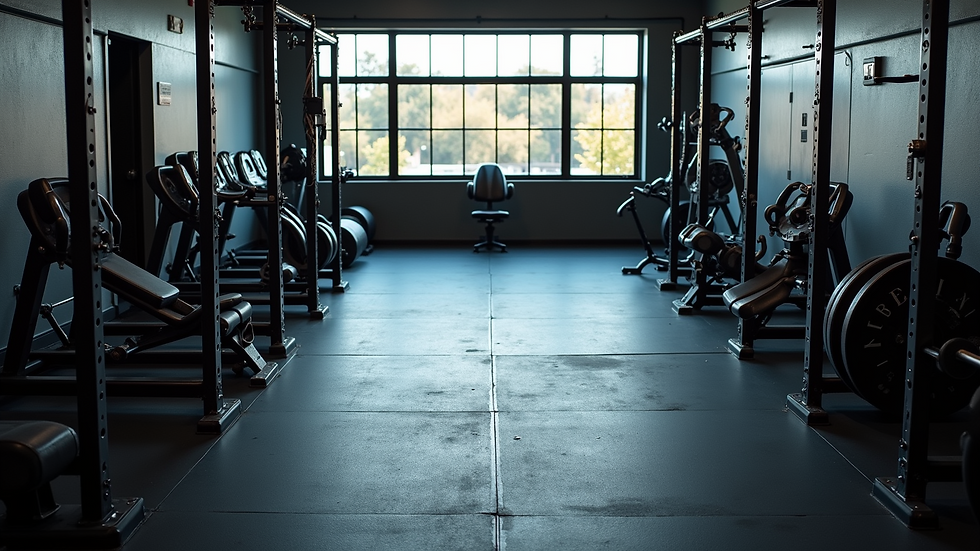DOUBLE PROGRESSION WEIGHTLIFTING METHOD
- Moran Sciamama-Saghiv
- Aug 30
- 5 min read
The world of weightlifting is full of various training methods, each claiming to help you reach your fitness goals. Among these, the Double Progression weightlifting method shines as a highly effective approach for both newcomers and experienced lifters. This method focuses not just on lifting heavier weights but also on increasing the repetitions you perform. This dual emphasis makes it a comprehensive strategy for gaining strength and building muscle.
In this blog post, you will discover the Double Progression weightlifting method, learn how to implement it in your training, and explore the benefits it offers. Whether your goal is to develop muscle, increase strength, or improve your overall fitness, this approach can be a valuable addition to your routine.
What is the Double Progression Weightlifting Method?
The Double Progression weightlifting method is a training strategy that emphasizes progression in two key areas: the weight you lift and the number of repetitions you complete. This method is effective because it continually challenges your muscles, which is essential for growth and strength development.
The core idea is to start with a weight that feels manageable and then gradually increase the repetitions. Once you reach a specific rep count, you'll add more weight and restart the process. This cycle helps you avoid plateaus and keeps your workouts fresh.
How to Implement the Double Progression Method
Step 1: Choose Your Exercises
Begin by selecting exercises to include in your routine. Compound movements like squats, deadlifts, bench presses, and overhead presses are excellent options. These exercises not only engage multiple muscle groups but also promote overall strength.
Step 2: Determine Your Starting Weight
Identify a weight you can lift for a specific repetition range—generally between 6 to 12 reps. This weight should be challenging yet manageable, allowing you to maintain good form throughout.
Step 3: Set Your Rep Goals
Decide on a rep goal for each exercise. For instance, aim for 8 reps at your chosen weight. If you can hit this target with proper form for two consecutive workouts, it’s time to increase the weight.
Step 4: Increase Weight and Reps
Once you achieve your rep goal, add a small increment to your weight—usually 2.5 to 5 pounds, depending on the exercise and your strength. After increasing the weight, drop your rep goal back down to the lower end of your range (for example, 6 reps) and work your way back up again.
Step 5: Track Your Progress
It is essential to keep a training log to record your weights and repetitions. This will help you stay organized and motivated as you visualize progress over time. Regularly reviewing your log can also surface trends, allowing you to adjust your training effectively.

Benefits of the Double Progression Method
1. Prevents Plateaus
One of the most significant advantages of the Double Progression method is its ability to prevent plateaus. According to fitness experts, around 60% of gym-goers hit a plateau at some point. By focusing on both weight and repetitions, you continually challenge your muscles, which is crucial for ongoing progress.
2. Encourages Consistency
This method promotes consistency in your workouts. With defined goals for both weight and reps, you'll find it easier to stay dedicated. You will be more motivated to show up for each session, knowing that measurable progress is close at hand.
3. Suitable for All Levels
Whether you are just starting or have years of lifting experience, the Double Progression method can fit your fitness level. Beginners can start with lighter weights and focus on their form, while experienced lifters can push their limits with heavier weights and higher rep goals. For example, beginners may lift 10-20% less than their max to master technique before increasing weight.
4. Enhances Muscle Growth
By using both weight and rep increases, this method stimulates muscle hypertrophy effectively. Research shows that a combination of progressive overload and increased volume can boost muscle mass significantly, making it an excellent choice for those seeking to bulk up.
5. Improves Overall Strength
As you consistently up the weight you lift, you'll notice significant improvements in your strength. This method not only helps you lift heavier but also enhances your performance in other physical activities. Many athletes report a 15% increase in overall strength within a few weeks of consistent training.
Common Mistakes to Avoid
While simple to follow, the Double Progression method has common pitfalls that could limit your results.
1. Ignoring Form
Prioritize proper form over lifting heavier weights. Bad technique can lead to injuries and slow your progress. Focus on mastering each movement before adding weight.
2. Skipping Warm-ups
Warming up is crucial for preparing your muscles and joints for the upcoming workout. Skipping it raises the risk of injury and might reduce your performance.
3. Not Tracking Progress
If you don't keep a training log, you may miss out on opportunities for improvement. Make recording your weights and reps a habit after each workout.
4. Overtraining
It's crucial to challenge yourself, but be careful of overtraining. Make sure you allow enough time for recovery between workouts, and pay attention to your body. If you feel fatigued or painful, consider adjusting your routine.

Sample Workout Plan Using the Double Progression Method
Here’s a sample workout plan that uses the Double Progression method. This plan focuses on major muscle groups and can be performed three times a week.
Day 1: Upper Body
Bench Press: 3 sets of 6-12 reps
Bent-Over Rows: 3 sets of 6-12 reps
Overhead Press: 3 sets of 6-12 reps
Pull-Ups: 3 sets of 6-12 reps
Day 2: Lower Body
Squats: 3 sets of 6-12 reps
Deadlifts: 3 sets of 6-12 reps
Lunges: 3 sets of 6-12 reps
Calf Raises: 3 sets of 6-12 reps
Day 3: Full Body
Deadlifts: 3 sets of 6-12 reps
Bench Press: 3 sets of 6-12 reps
Leg Press: 3 sets of 6-12 reps
Dumbbell Rows: 3 sets of 6-12 reps
As you progress, remember to adjust your weights and rep goals according to the Double Progression method.
Wrapping Up
The Double Progression weightlifting method is an effective approach for anyone looking to boost their strength and muscle gains. By emphasizing both weight and repetitions, you pave the way for continuous growth while keeping workouts interesting.
Incorporating this method into your routine can help you avoid plateaus, enhance your consistent effort, and reach your fitness targets. Remember to maintain proper form, meticulously track your progress, and listen to your body for the best results.
With commitment and the right approach, you can leverage the Double Progression method to elevate your training experience.


Services by Dr. Moran Sciamama-Saghiv:




Comments